How To Whip Egg Whites (Stiff Peaks & Soft Peaks)
This post may contain affiliate links. See our disclosure policy for more.
How To Whip Egg Whites – Learn how to whip egg whites into stiff peaks or soft peaks for all your favorite recipes. Don’t miss our tips to make it as easy as possible!
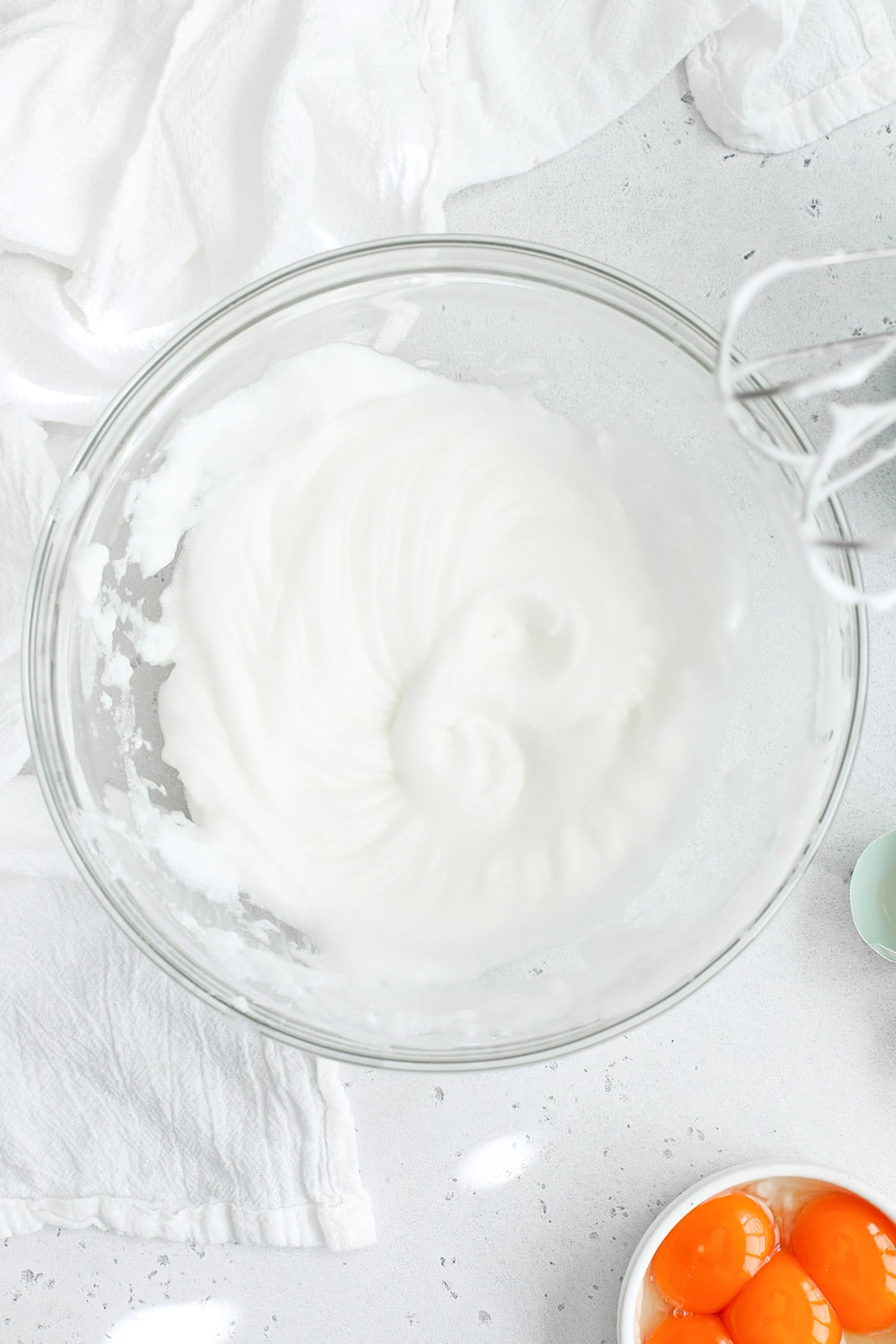
Have you whipped egg whites before? I’ve got a few recipes in the works that use this easy baking technique, so now seems like the perfect time for a quick refresher!
Whipping egg whites to stiff peaks or soft peaks is pretty straight-forward, but can have a HUGE impact on the quality of your bakes.
If you haven’t done it in a while, this is one of those kitchen skills that’s worth brushing up on! Whipping egg whites will add structure to your baked goods and under- or over-whipping your egg whites can mean the difference between fluffy crisp waffles or a light, airy cake and dense ones. It can make or break macarons, meringues and more.
Here’s everything you’ve ever wanted to know about whipping egg whites:
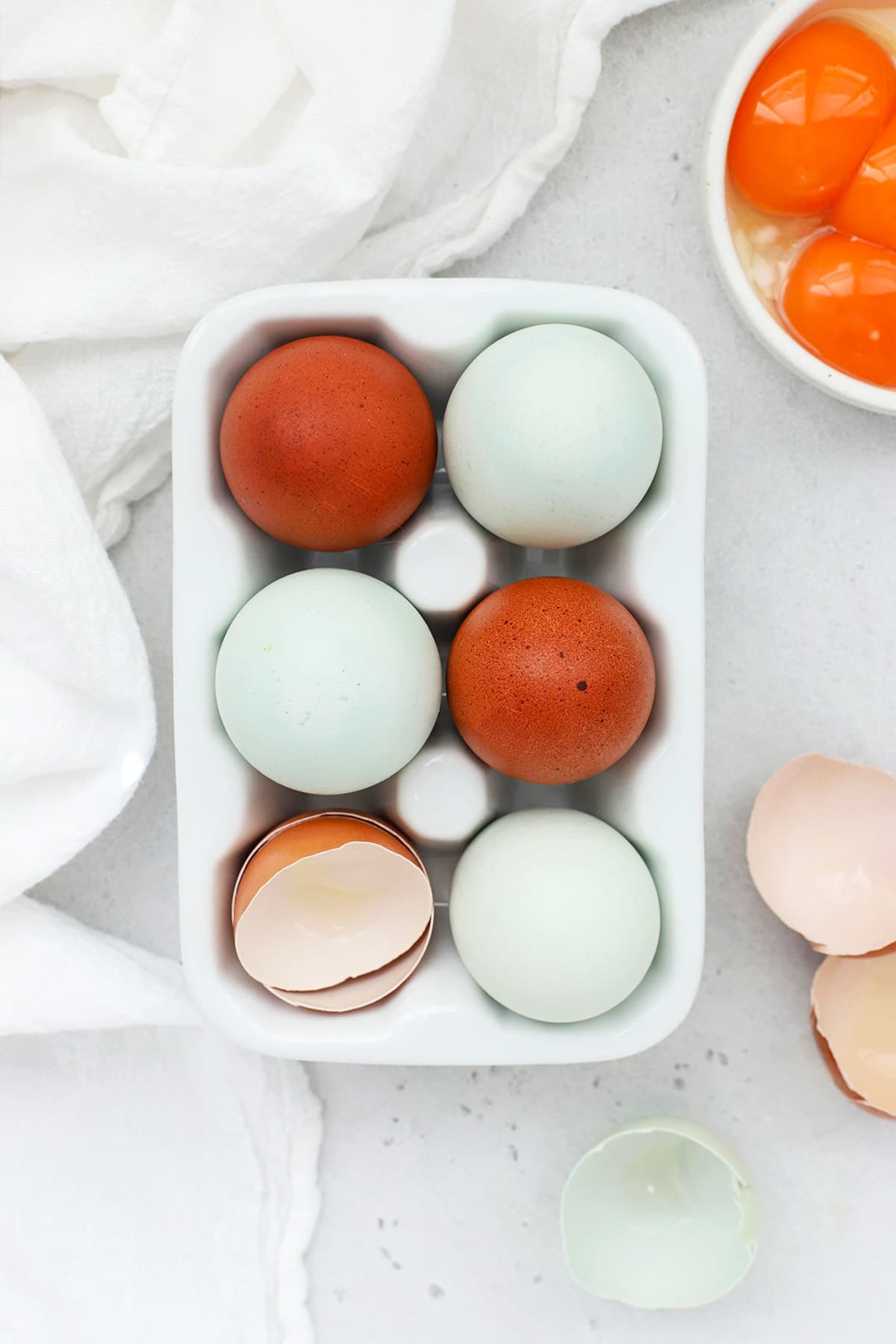
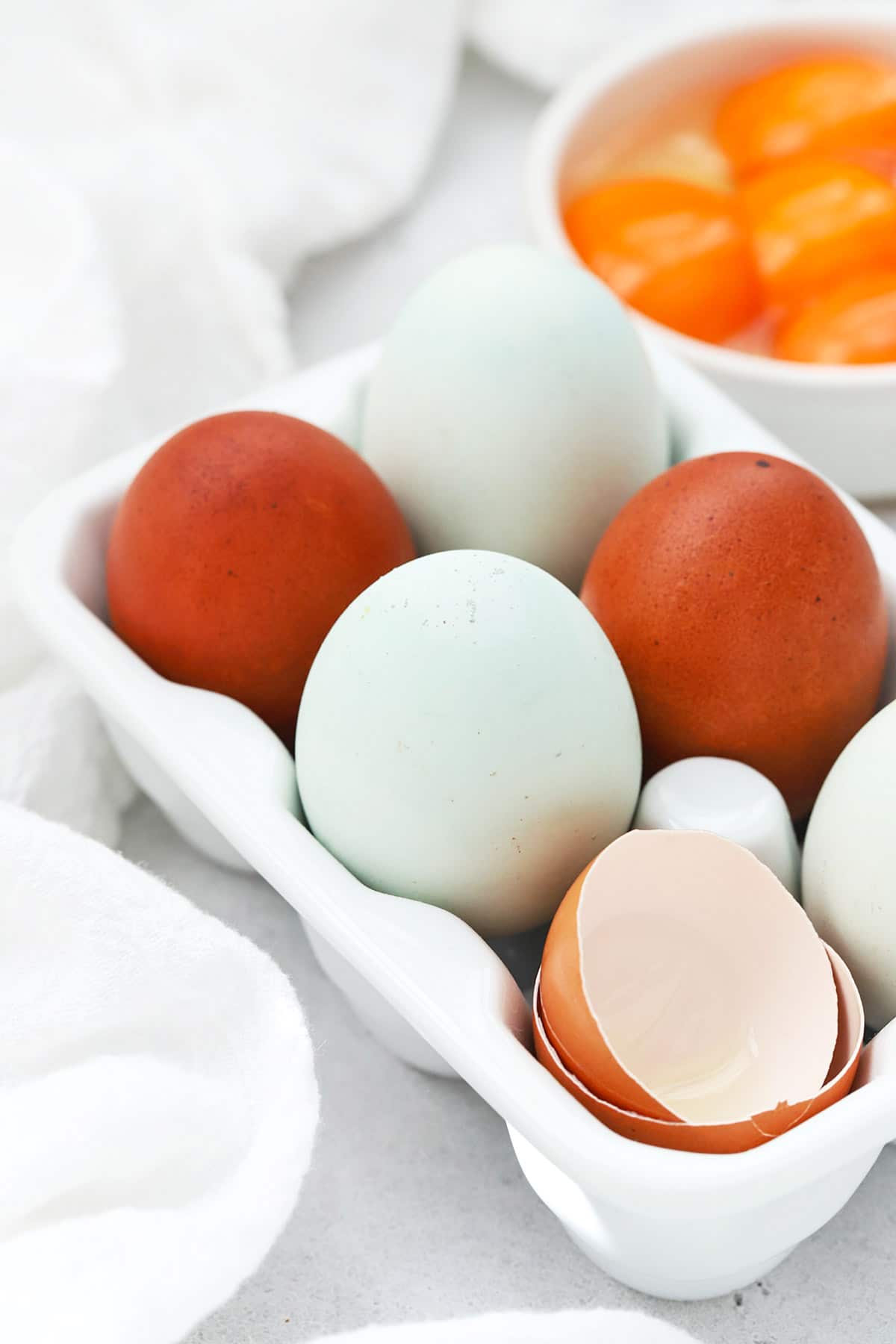
Whipping Egg Whites, At A Glance:
What Is Whipping Egg Whites?
Egg white are primarily made out of protein and water. Beating or whipping egg whites is whisking them or beating with a hand mixer or stand mixer to stretch the protein strands and incorporate air into the egg whites. This is a technique used to add height, lightness, and a delicate texture to recipes and baked goods.

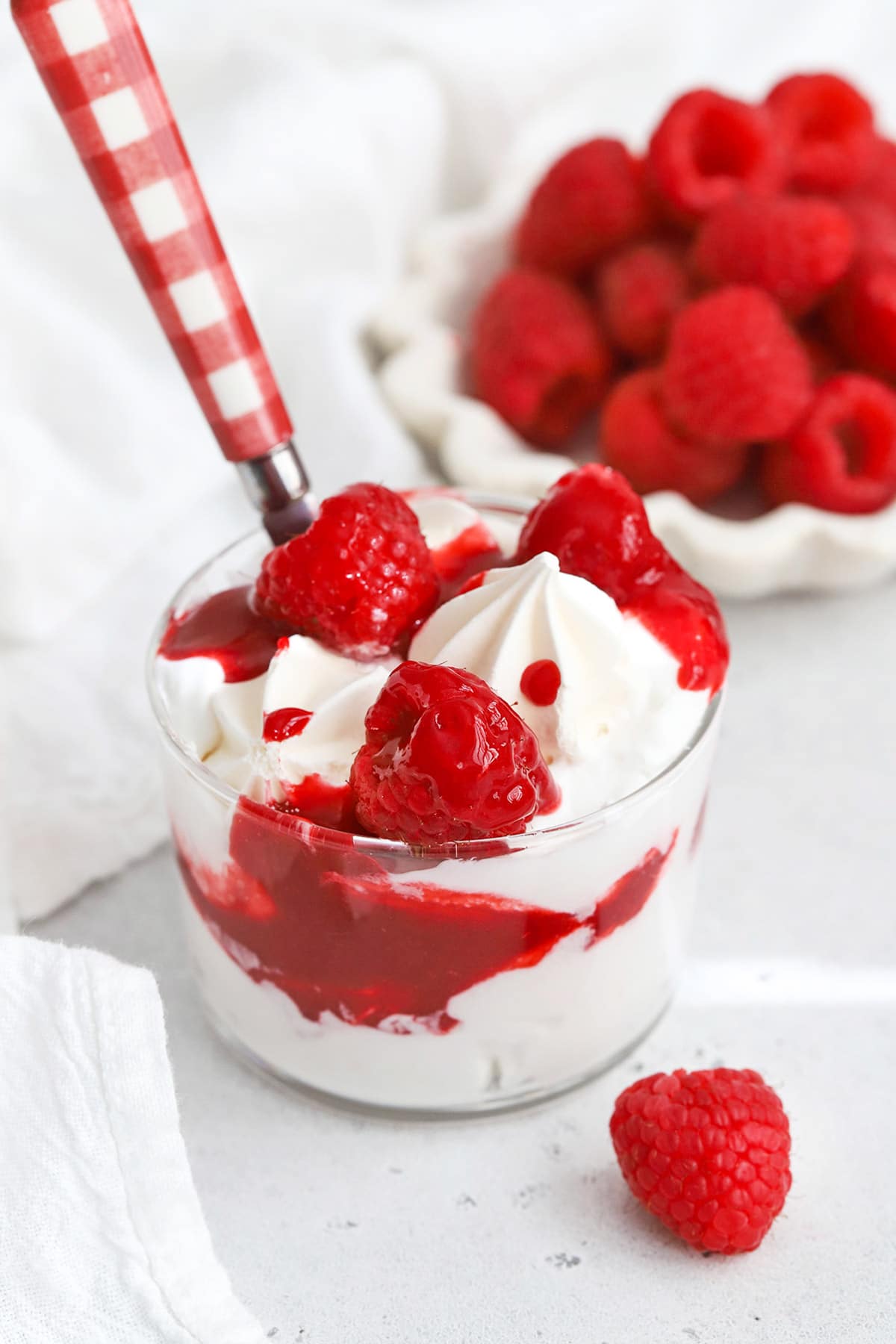
What Are Whipped Egg Whites Used For?
Common ways to use whipped egg whites are:
- French Macarons
- Souffles
- Pavlova
- Angel Food Cake
- Meringue Cookies
- 7-Minute Frosting or Swiss Meringue Buttercream
- Folding into waffle, pancake, or cake batter (chiffon cake, sponge cakes, angel food cake) to create a lighter, fluffier texture
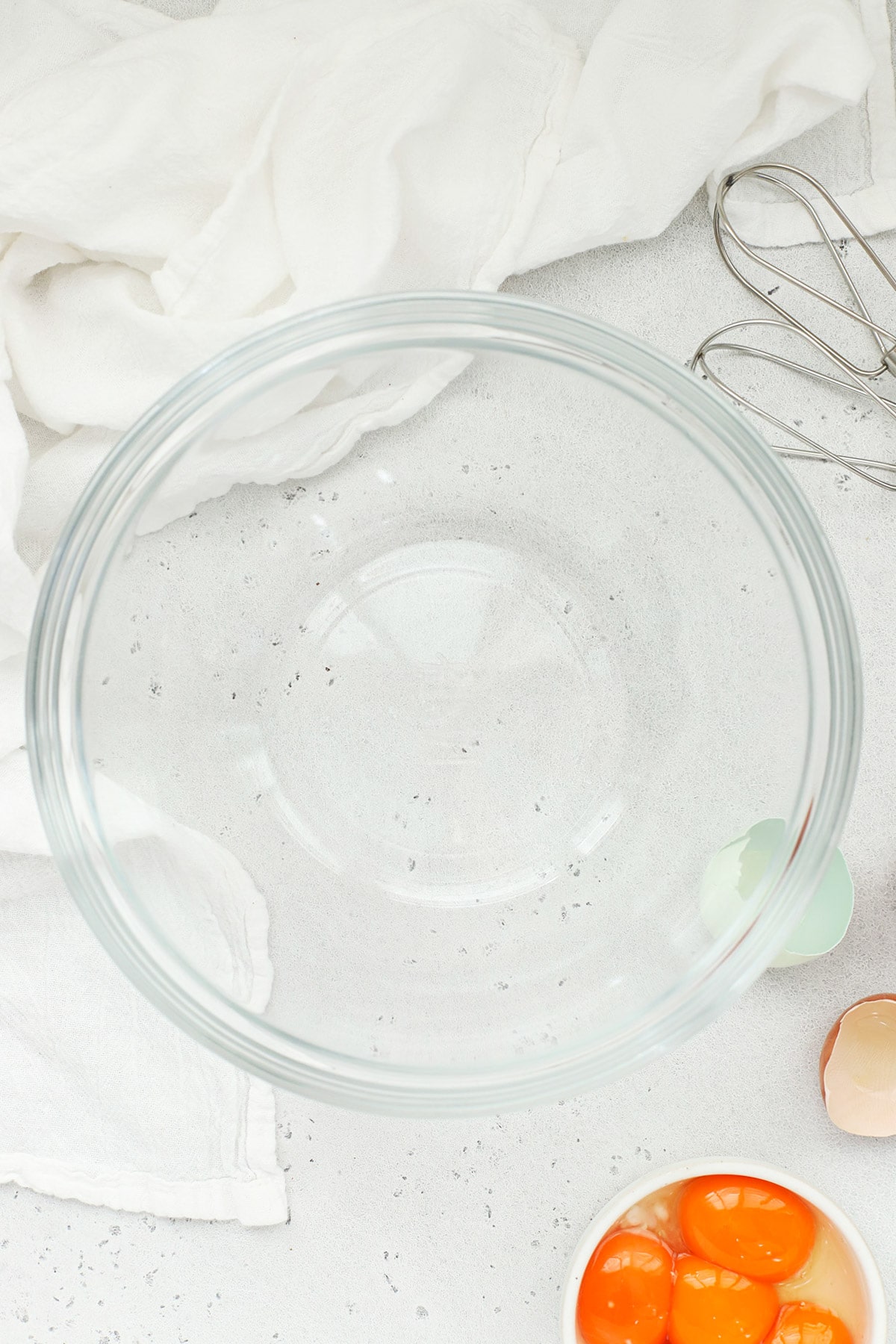
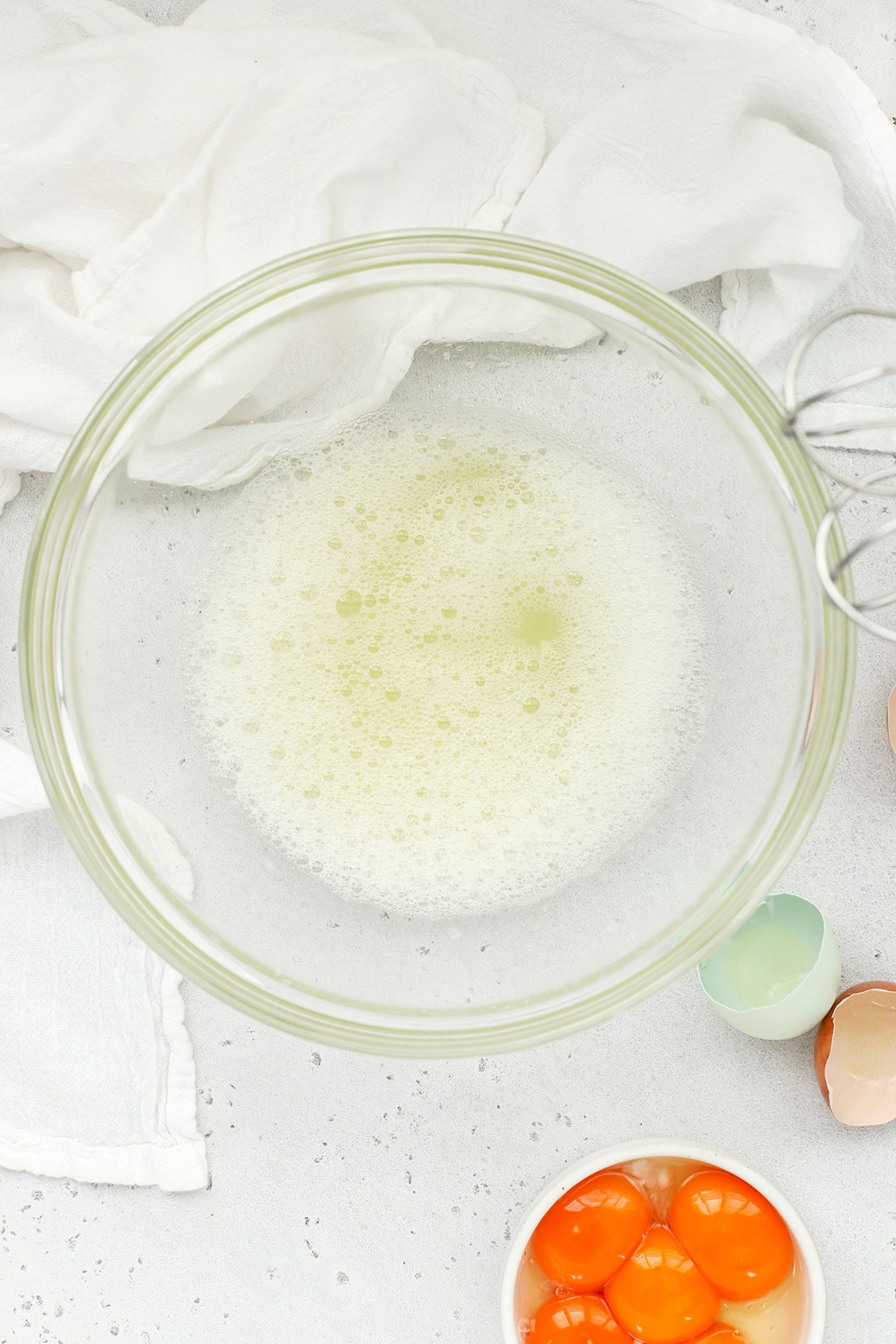
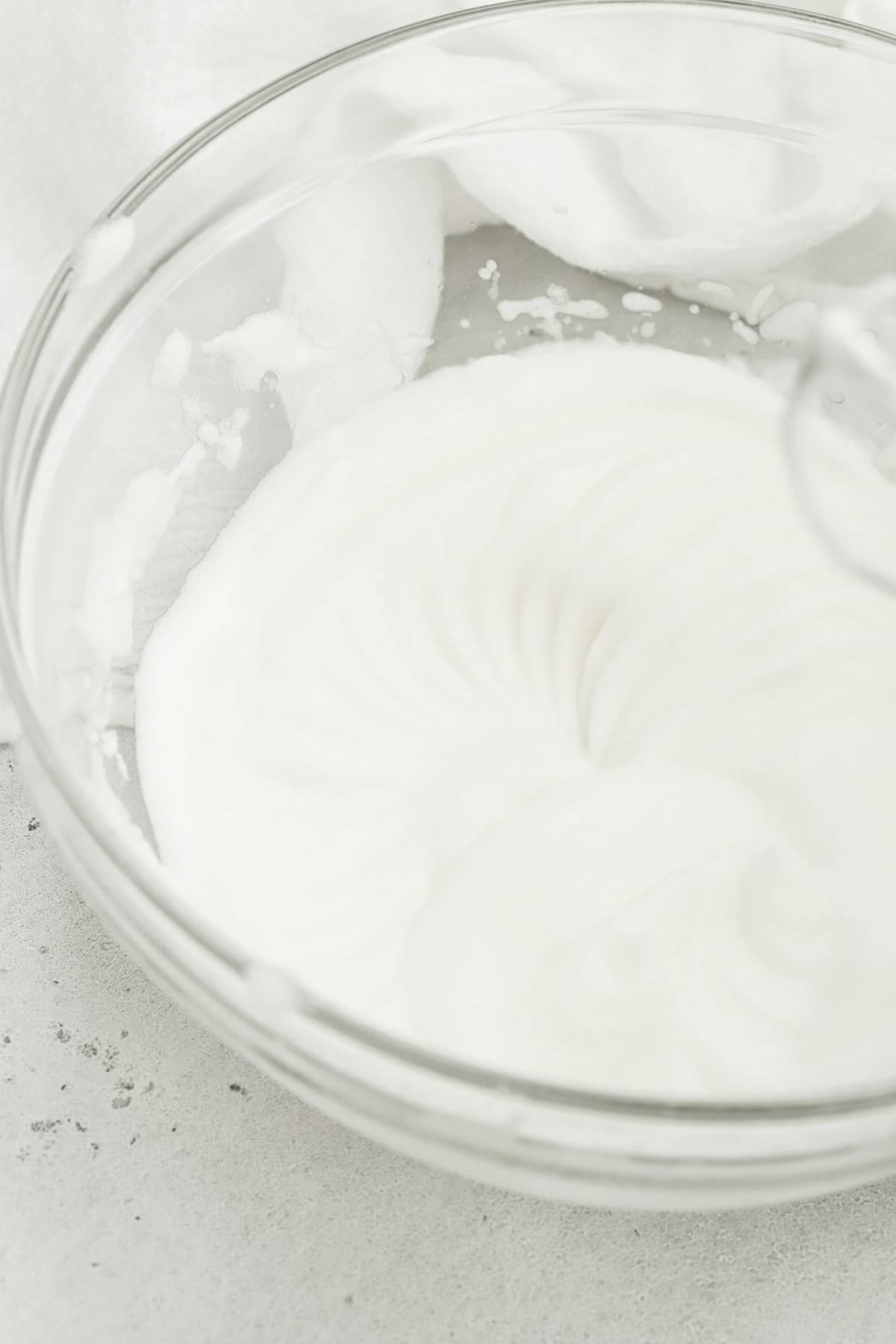
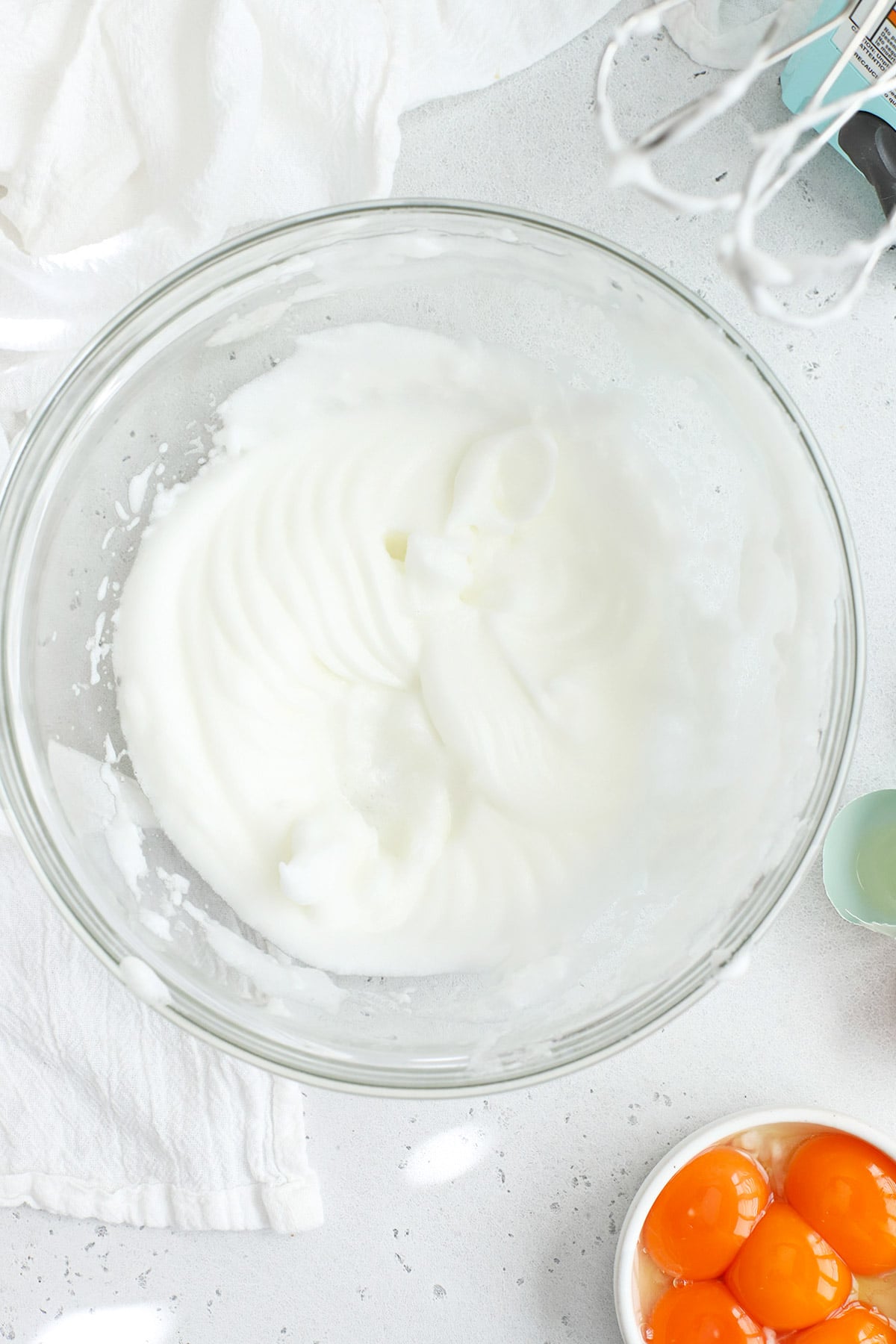
How To Whip Egg Whites To Stiff Peaks (Or Soft Peaks)
- Start With A Glass Or Metal Bowl. These two materials help the egg whites beat better. Plastic is too porous, which means small fat or oil particles can get trapped more easily, making it difficult to whip egg whites properly. A glass or stainless-steel bowl works really well!
- Start by double-checking that your bowl and beaters are perfectly clean. Even the slightest residue, or fat in any form (egg yolks, butter, oil, etc.) can make it impossible for your egg whites to whip properly. Wash and dry them thoroughly, and consider double-checking by running a clean kitchen cloth, paper towel, or cotton ball dipped in vinegar or lemon juice over the bowl and beaters to remove any lingering residue.
- Separate Your Eggs, Making Sure NO Yolks Get Into The Bowl. Place egg whites in your bowl and reserve yolks for another use. (Note: if ANY egg yolk gets into the whites, you’ll need to start over. Use the compromised eggs for scrambled eggs/omelets and start fresh.)
- Start whisking the egg whites on low speed with your mixer until the egg whites begin to foam (small bubbles will appear and the mixture will still be mostly clear).
- Gradually increase the speed of your hand mixer to medium (or medium-high speed at the highest), until the egg whites are roughly double in volume and have turned white and mostly opaque.
- Check Your Peaks Regularly. Start checking the peaks every minute or so until they’ve reached the right stiffness. Use a whisk or beater to check by dipping it into the whipped egg whites. Hold the whisk horizontally. If the whites form a peak but the tip droops, you’ve reached the SOFT peak stage. If the peak holds its point and shape, even when the whisk is rotated, you’ve reached the STIFF peak stage.
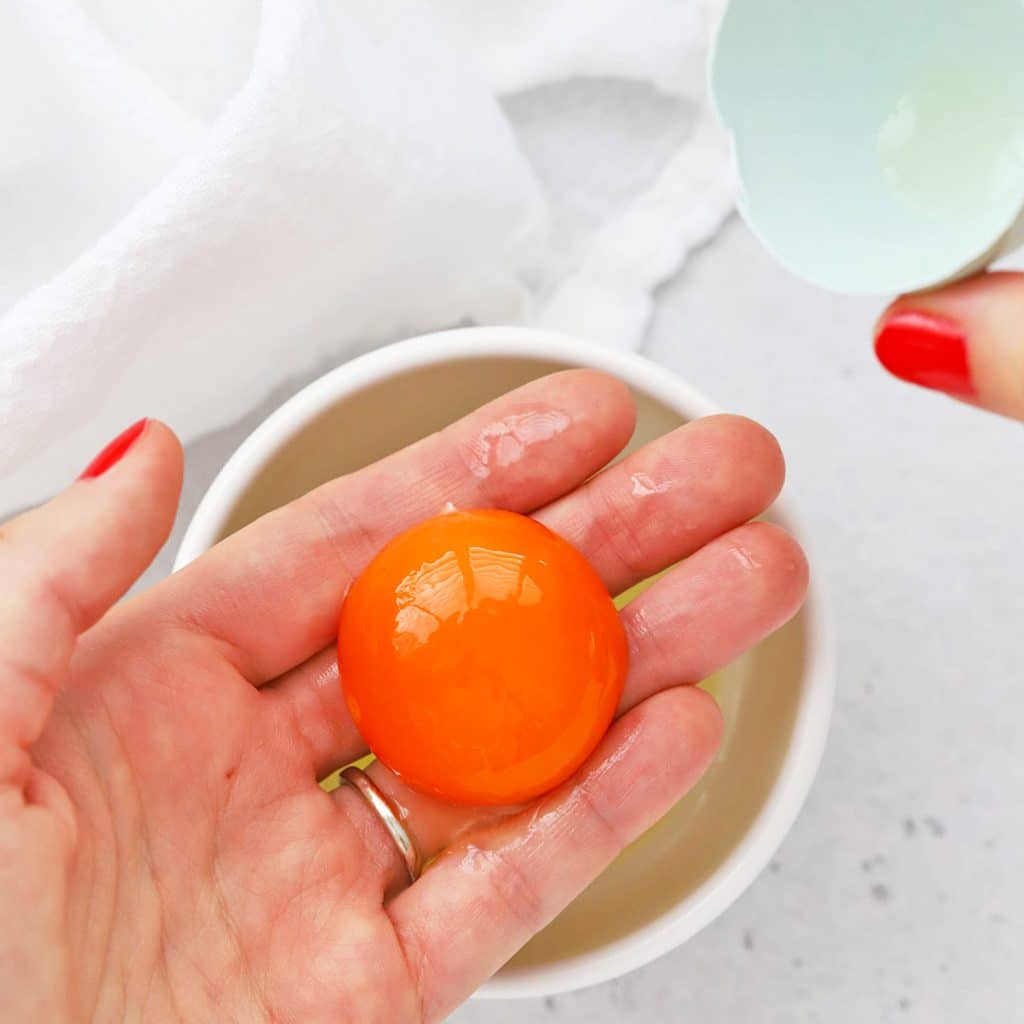
Psst! Here’s How To Separate Eggs
You’ll need to separate the egg yolks & whites to whip the egg whites. If you’ve never done it before, this post has 3 ways to separate eggs. It’ll walk you through every step!
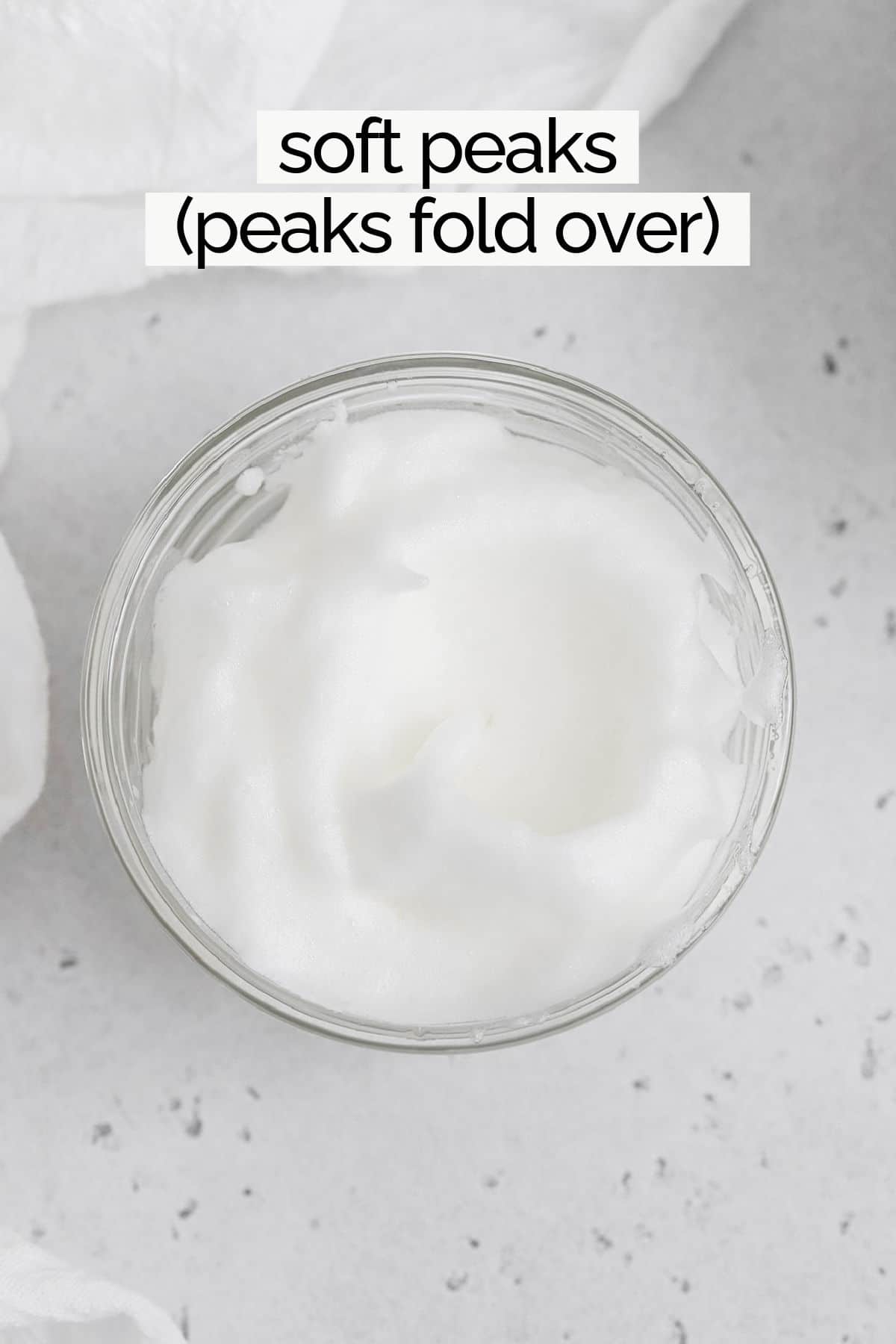
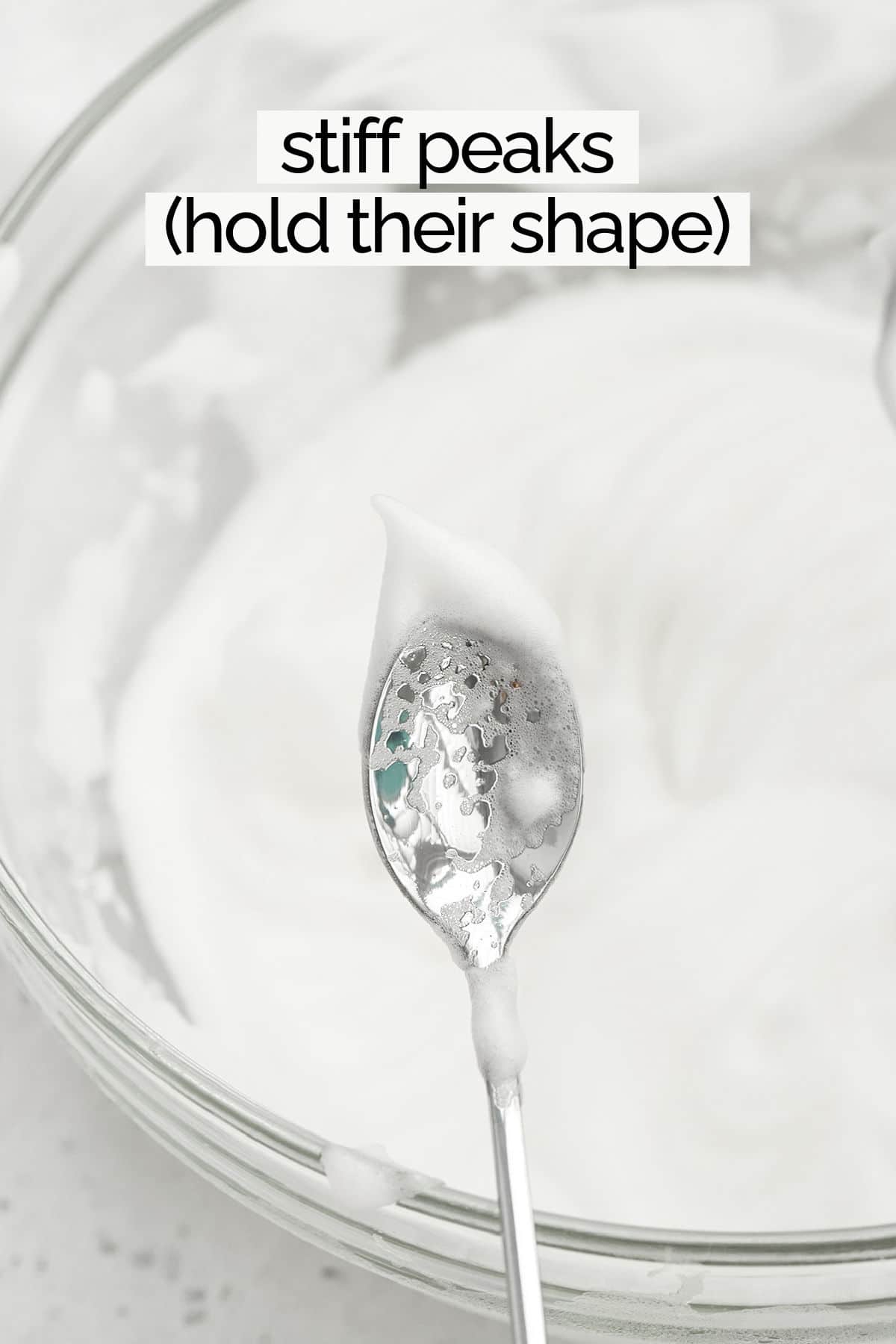
Soft Peaks Vs. Stiff Peaks
So what’s the difference between soft peaks and stiff peaks? Much like the names suggest, it has to do with the firmness or “set-ness” of the egg whites. Here’s how to tell you’ve reached each level of stiffness:
Soft Peaks: A Slight Droop
- When you dip a whisk or your beater into the whites and lift it up, the tip will look like a snowy peak. In soft peaks, the end or top of the peak will droop over (like soft-serve ice cream).
Stiff Peaks: Hold Their Shape Even When Flipped Upside Down
- Now for the strongest hold. With stiff peaks, a peak will form when the beaters or whisk are removed from the beaten whites. The top of the peak will remain tall and pointed, without falling or drooping over. Additionally, when you turn the whisk or beaters in other directions, the peak will STILL hold its shape. You can even turn your bowl upside down and the stiff peaks will hold their shape! (But I recommend you check with your whisk, not your bowl!)
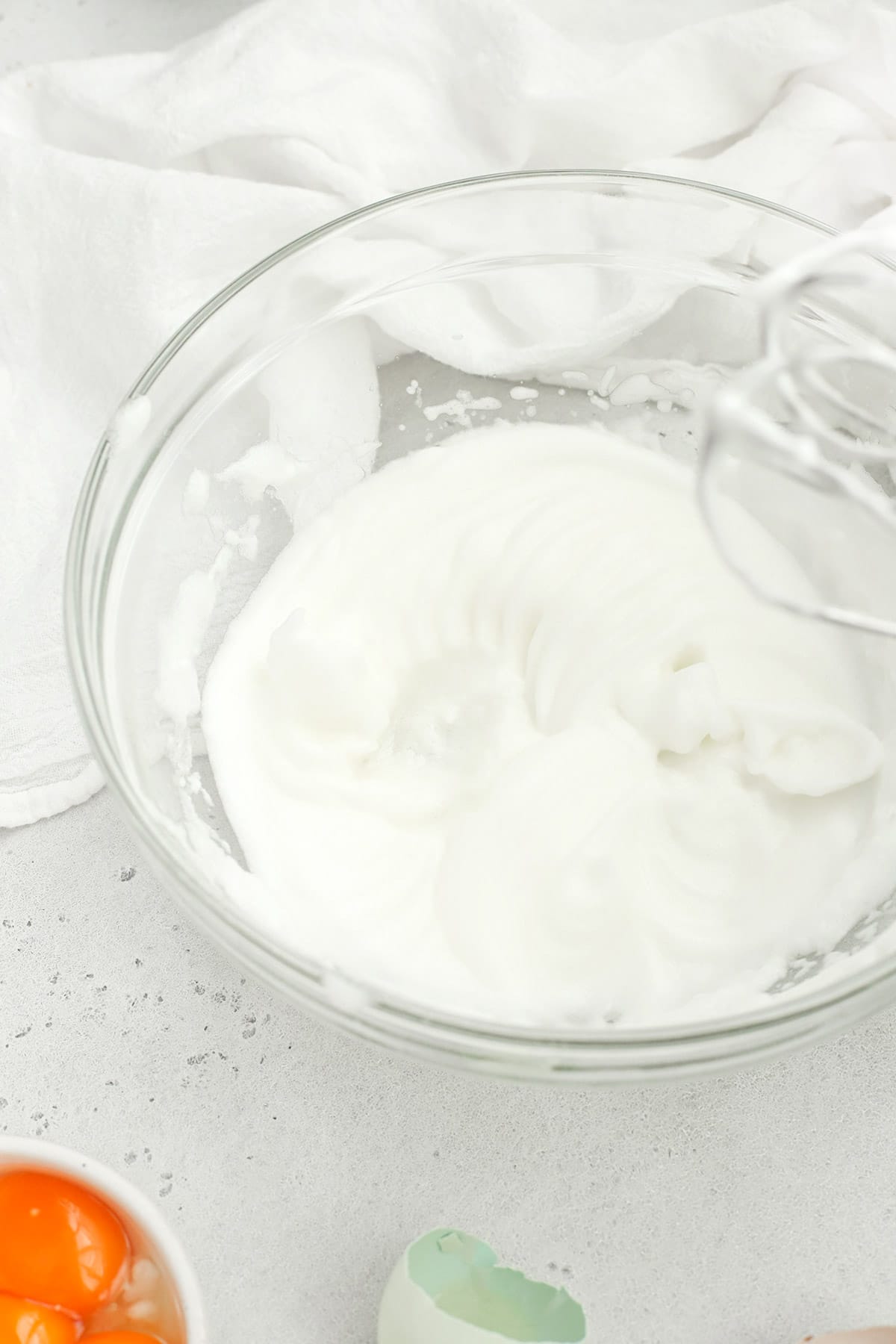
How To Get Whipped Egg Whites To Hold Their Shape Better
- ADD SALT. A tiny pinch of salt can help add structure. Use a tiny pinch (less than 1/8 tsp.) for 2-4 egg whites. In most recipes, you’ll add this once you’ve reached the foamy stage.
- ADD VINEGAR OR LEMON JUICE. Adding some form of acid, like white vinegar or lemon juice can also add stability to your egg whites. In general, about 1/8 tsp. of vinegar or lemon juice per egg white added during the foaming stage is enough!
- ADD CREAM OF TARTAR. Though it’s not liquid, cream of tartar (or tartaric acid) performs the same function. 1/8 tsp. cream of tartar per egg white during the foaming stage is enough.
- ADD SUGAR. Only really done when you’re making meringue or frosting, adding sugar to your whipped egg whites gradually can help give stability. Be careful here, as adding the sugar too early on can make it more difficult for the egg whites to whip.
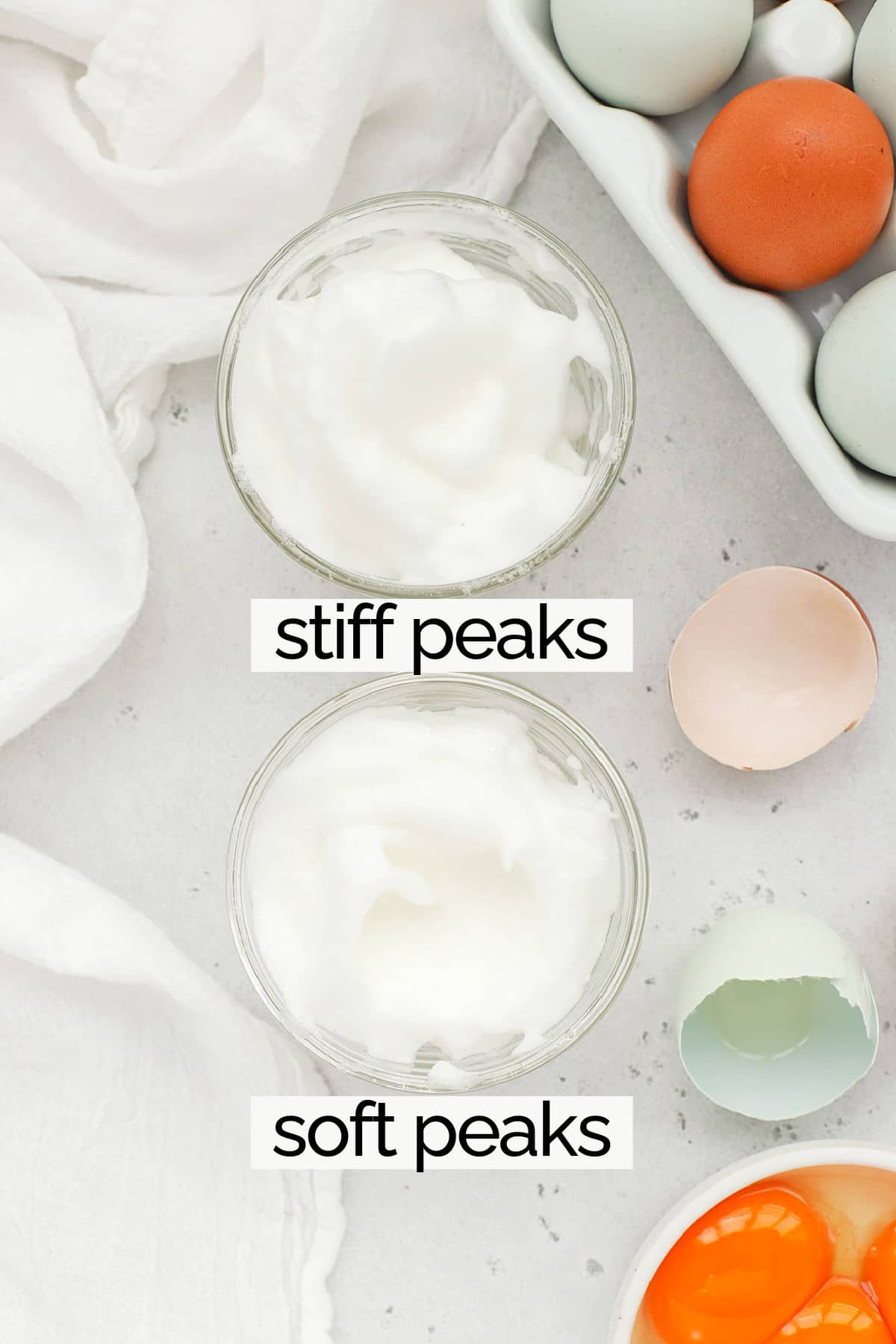
FAQ + Tips For Whipping Egg Whites:
How Long Does It Take To Whip Egg Whites? This will vary a bit based on how many egg whites you’re beating, what temperature the eggs and the room are, and how fast your mixer goes. But a general rule of thumb using a hand mixer is:
- SOFT PEAKS = about 4-5 minutes
- STIFF PEAKS = about 8-9 minutes
Why Are My Egg Whites Not Whipping? The most common reason is because there is some sort of fat (egg yolk, grease/oil/butter) present. This can happen if you get egg yolk into the whites, or there is residue from past cooking or baking projects on your bowl or the beaters.
Are Cold Egg Whites Or Room Temperature Egg Whites Better For Whipping? Eggs are typically easier to separate when cold, but easier to whip when room temperature. Room temperature whites beat faster than cold egg whites. (The proteins are more flexible when they’re closer to room temperature than when they’re cold.)
Have A Copper Bowl? Use It! One interesting fact is that copper bowls are the BEST bowls to use for whipping egg whites, as the copper ions reacts with the proteins in the egg whites and helps it along.
Can You Overbeat or Overwhip Egg Whites? YES! If you continue whipping them past the stiff peaks stage, the proteins will start to separate, lose their glossy sheen, and will turn dry and curdled or crumbly. You can often rescue over beaten egg whites by adding one additional fresh egg white to the mix and beating it in. (This doesn’t always work, but it’s worth a try before you throw them out!)
More Baking Tips To Try:
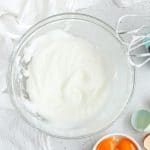
How To Whip Egg Whites (Stiff Peaks & Soft Peaks)
- Total Time: 15 minutes
- Yield: 1 batch
- Diet: Gluten Free
Description
Learn how to whip egg whites into stiff peaks or soft peaks for all your favorite recipes. Don’t miss our tips!
Ingredients
- A glass or metal bowl (plastic won’t work)
- Hand mixer with beaters attached
- Egg whites, preferably room temperature
Instructions
How To Whip Egg Whites:
- Start by double-checking that your bowl and beaters are perfectly clean. Even the slightest residue, or the presence of fat in any form (egg yolks, butter, oil, etc.) can make it impossible for your egg whites to whip properly. Wash and dry them thoroughly, and consider double-checking by running a clean kitchen cloth, paper towel, or cotton ball dipped in vinegar or lemon juice over the bowl and beaters to remove any lingering residue.
- Separate the egg yolks and whites. Place whites in your bowl and reserve yolks for another use. (Note: if ANY egg yolk gets into the whites, you’ll need to start over. Use the compromised eggs for scrambled eggs or omelets and start fresh.)
- Start whisking the egg whites on low speed with your mixer until the egg whites begin to foam (small bubbles will appear and the mixture will still be mostly clear).
- Gradually increase the speed of your hand mixer to medium (or medium-high at the highest), until the egg whites are roughly double in volume and have turned white and mostly opaque.
- Start checking your peaks every minute or so until they’ve reached the right stiffness.
3 Stages of Whipped Egg Whites:
- SOFT PEAKS: When a whisk or your beater is dipped into the whites and lifted up, the tip will look like a snowy peak. In soft peaks, the end or top of the peak will droop over (like soft-serve ice cream).
- STIFF PEAKS: The top of the peak will hold its shape even when the whisk is rotated or moved. (You would even be able to turn your bowl upside down and the egg whites would hold their shape, though I don’t recommend trying this!)
- Prep Time: 15
- Category: Tutorial
- Method: No-Cook
- Cuisine: American

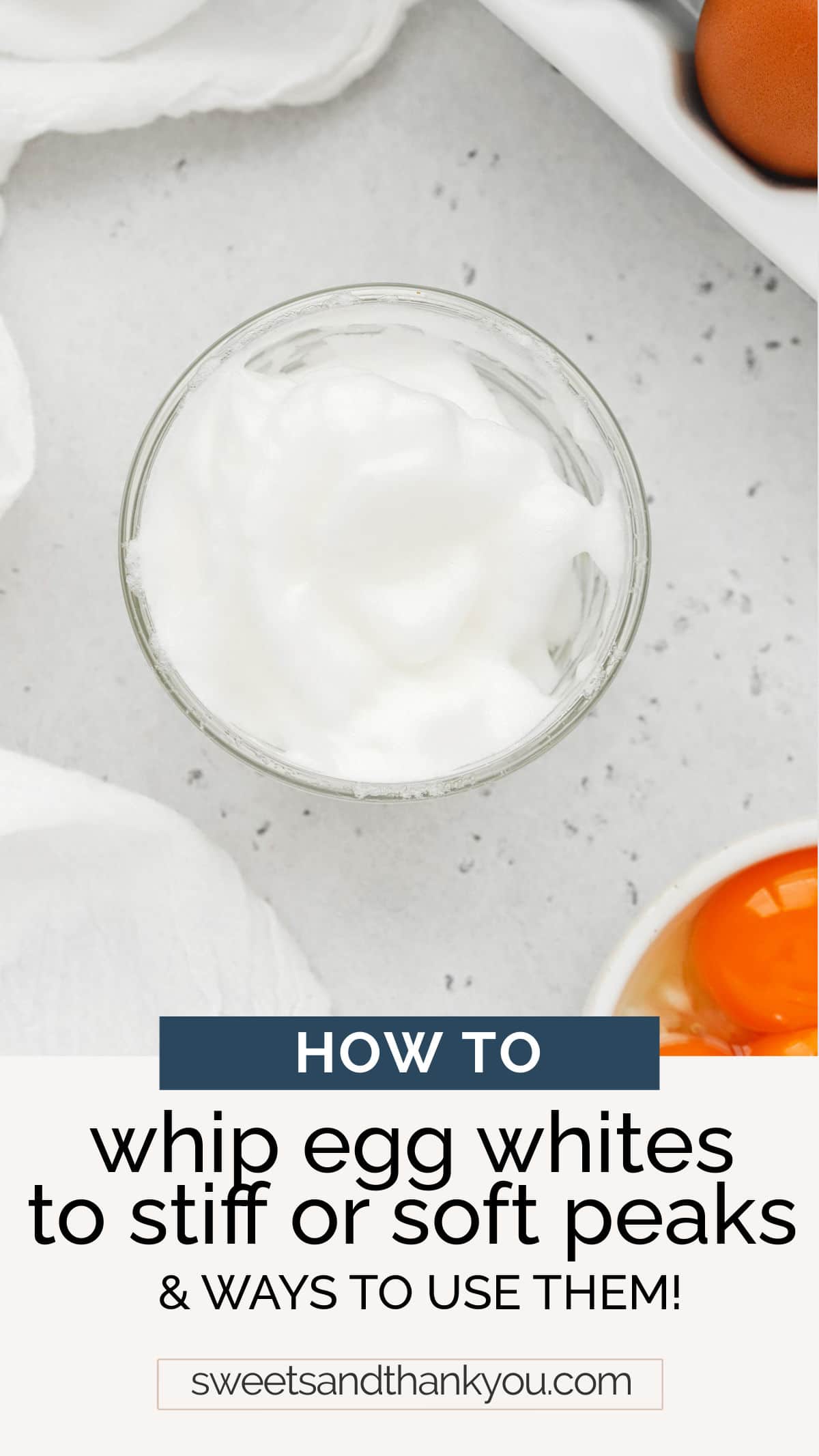
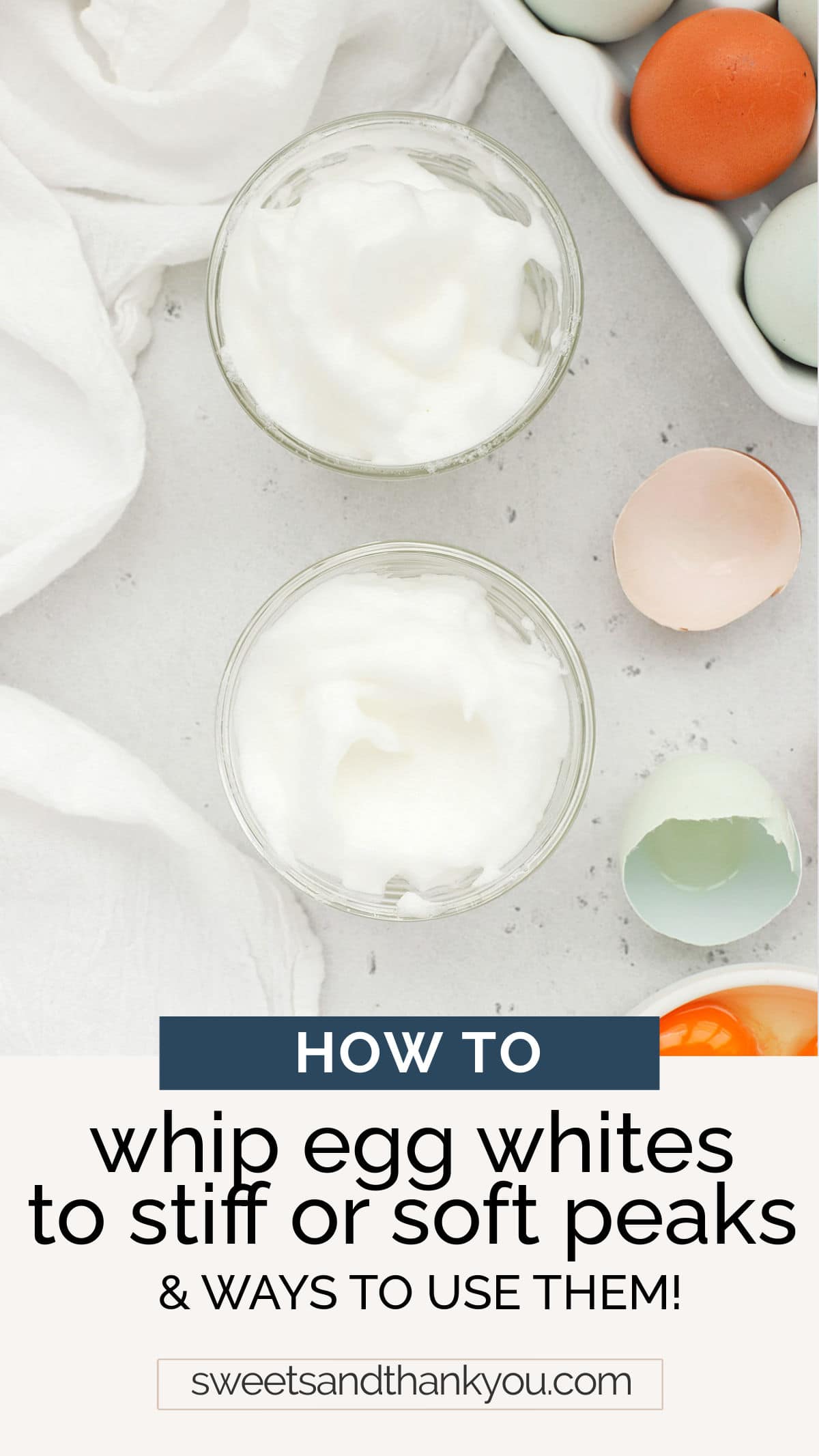
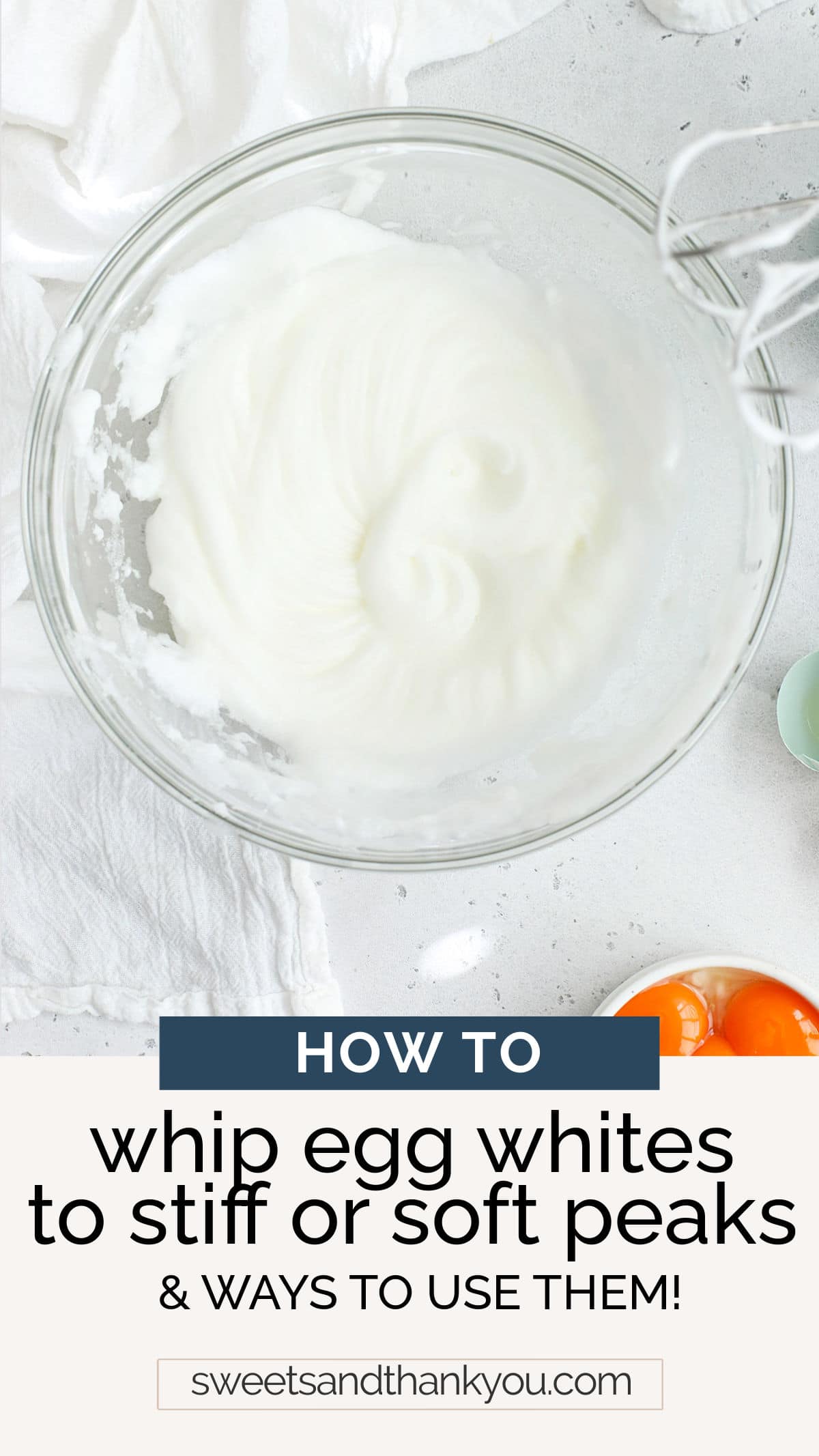
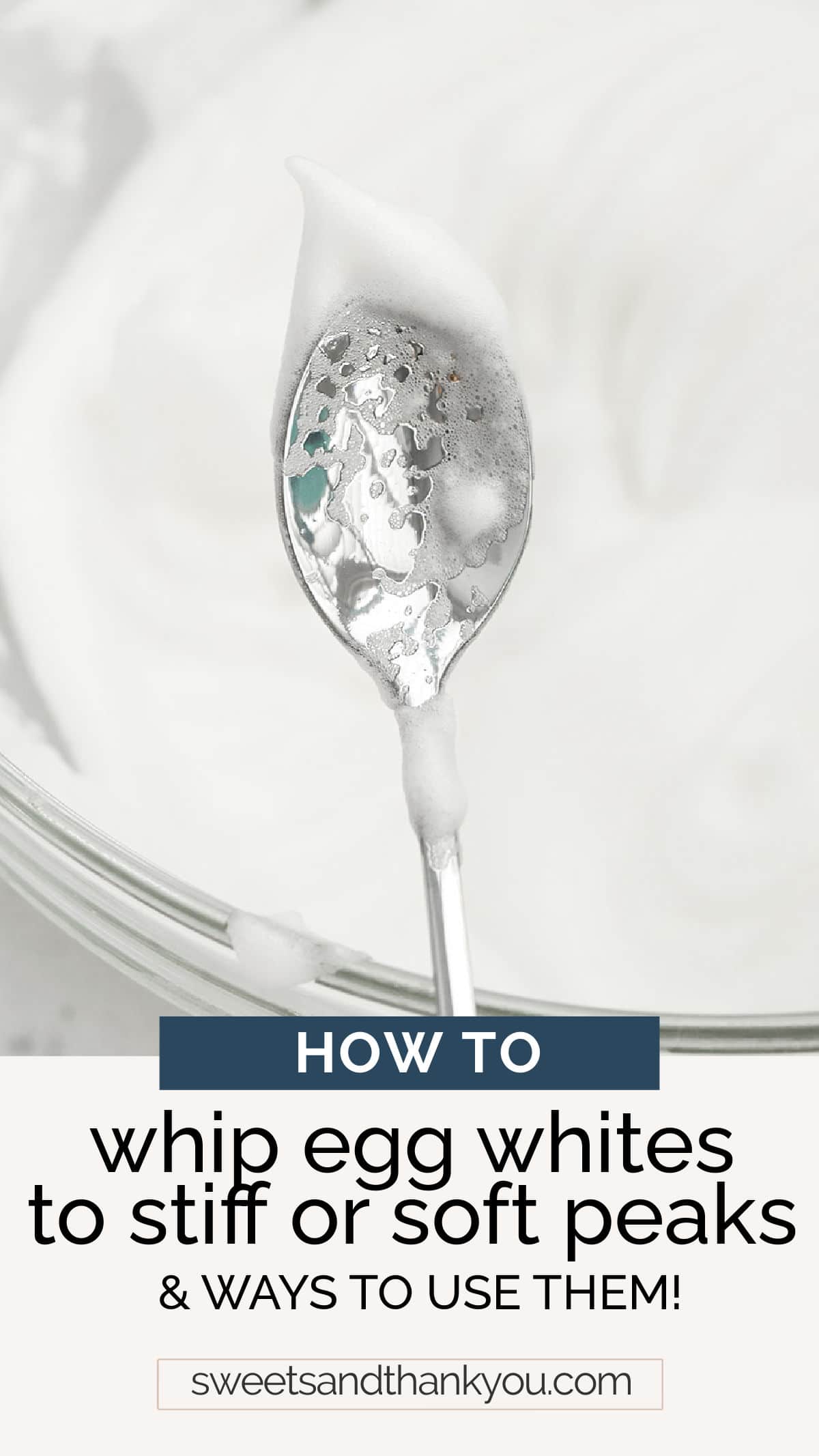
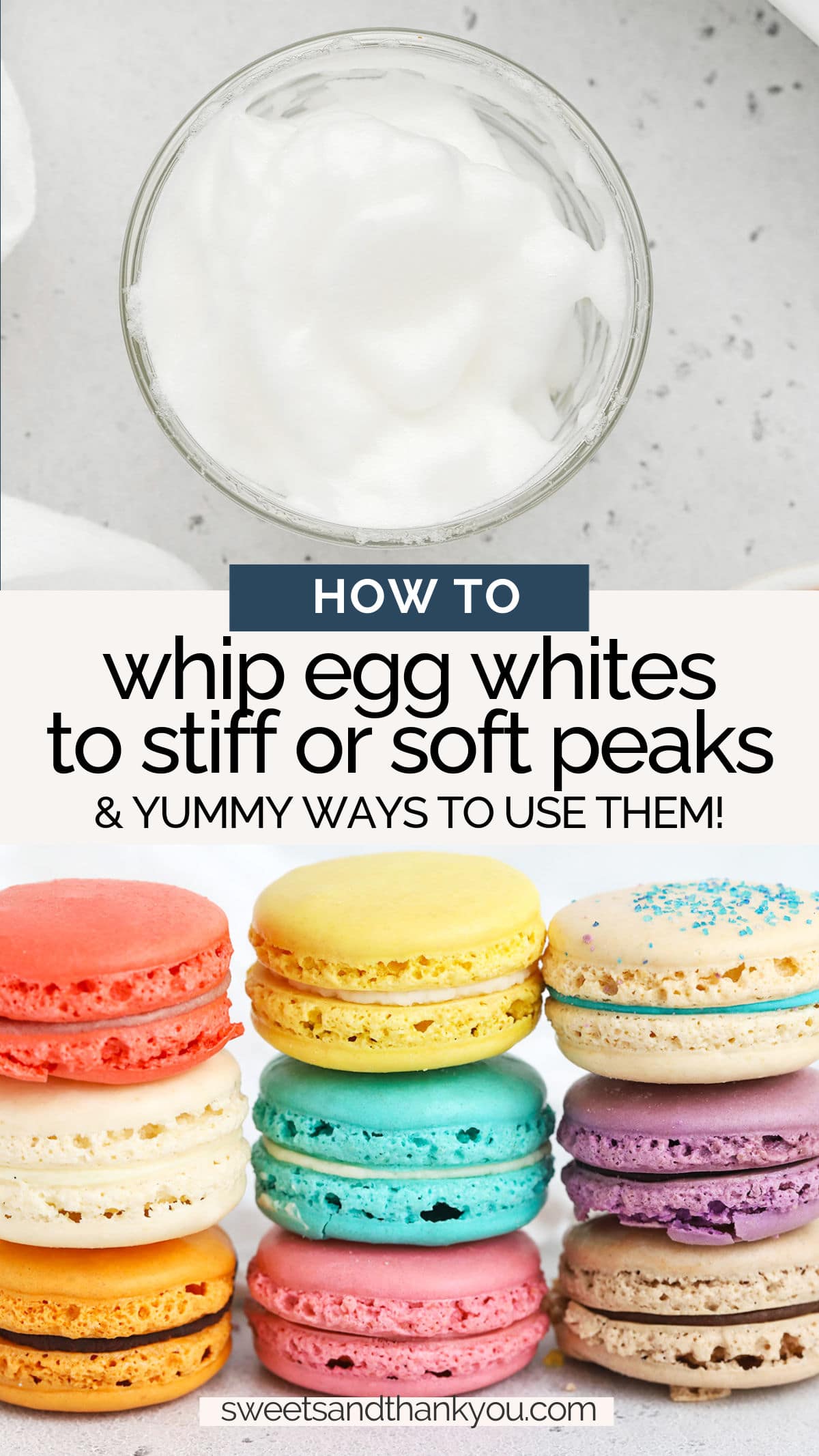
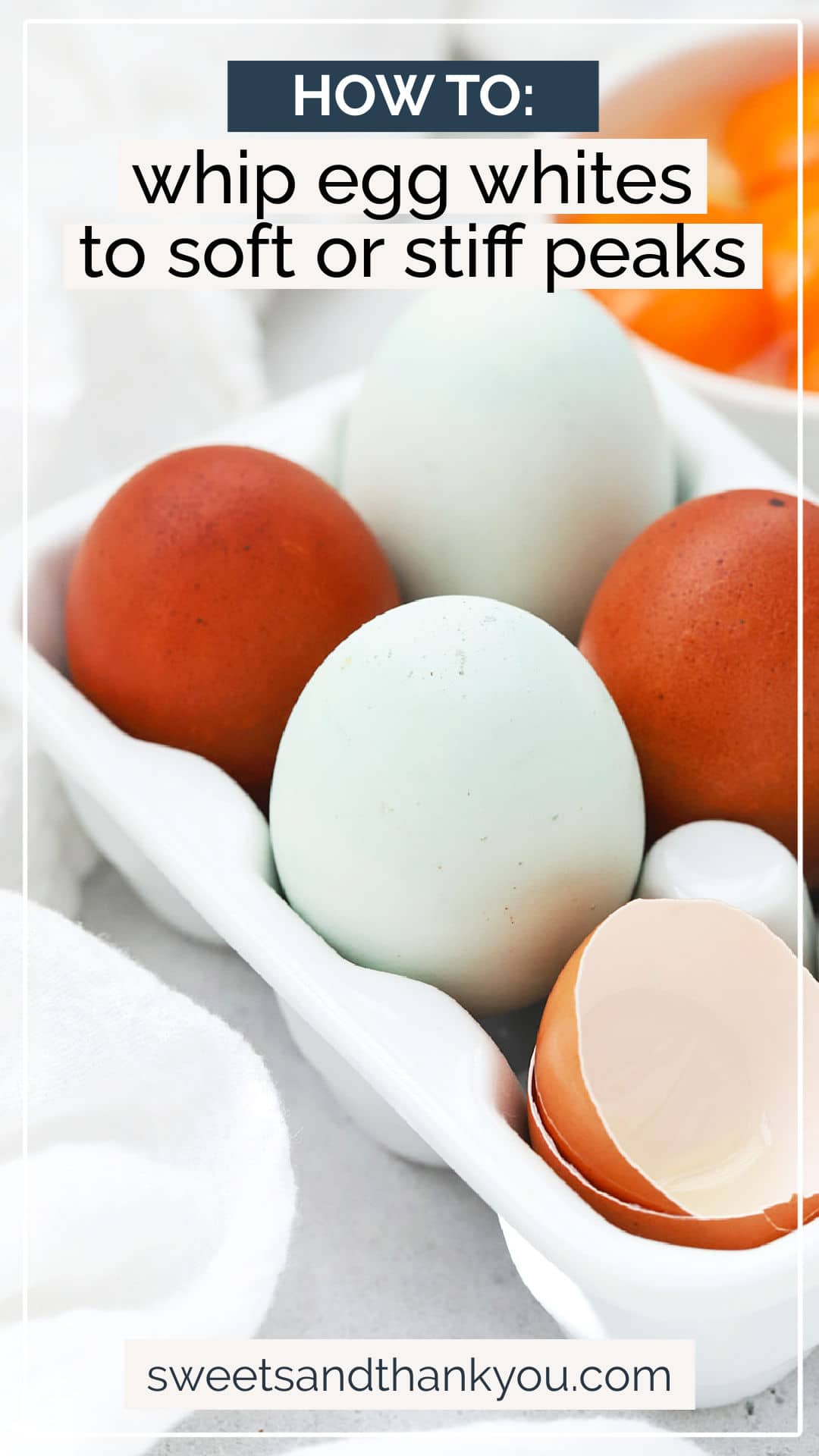
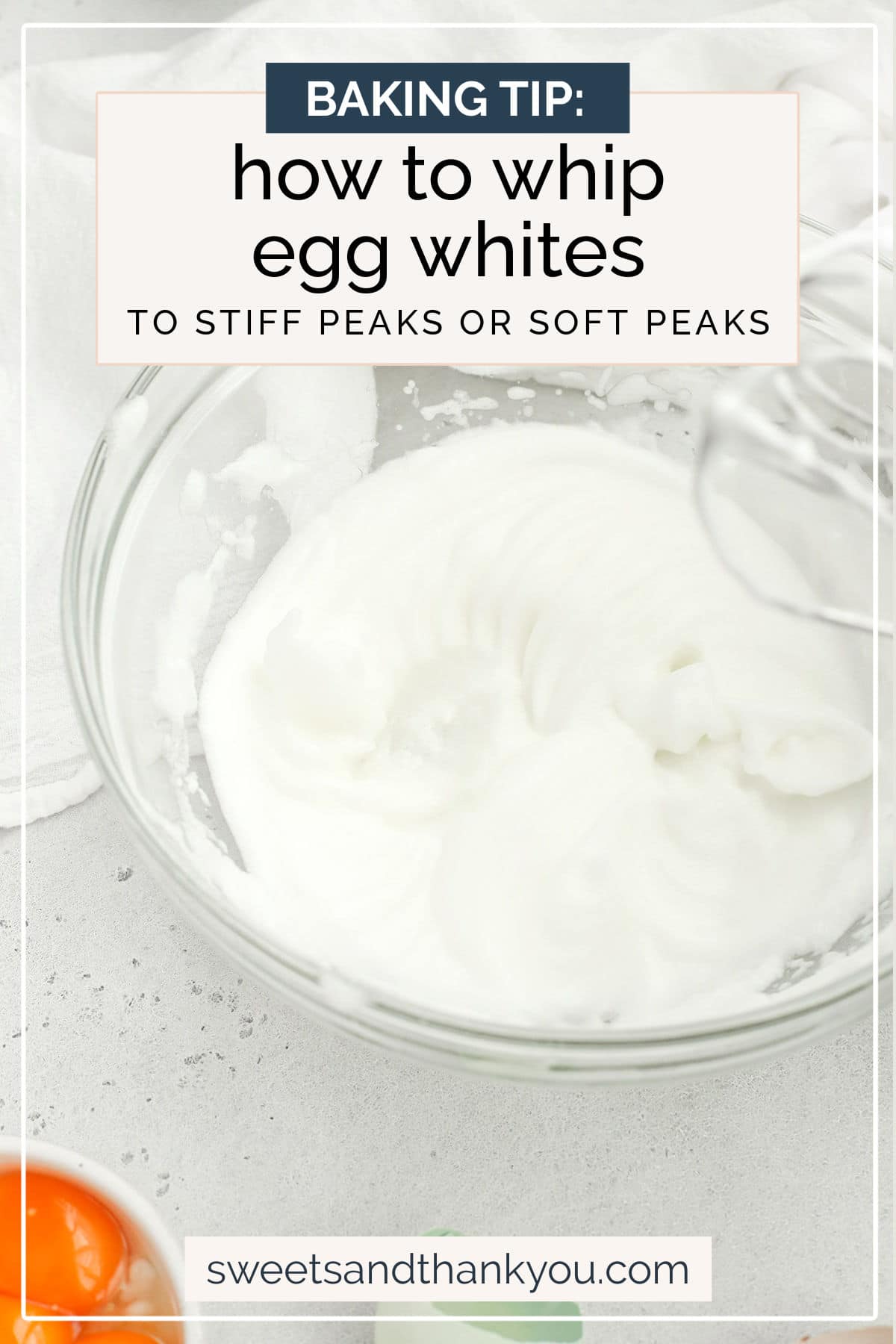
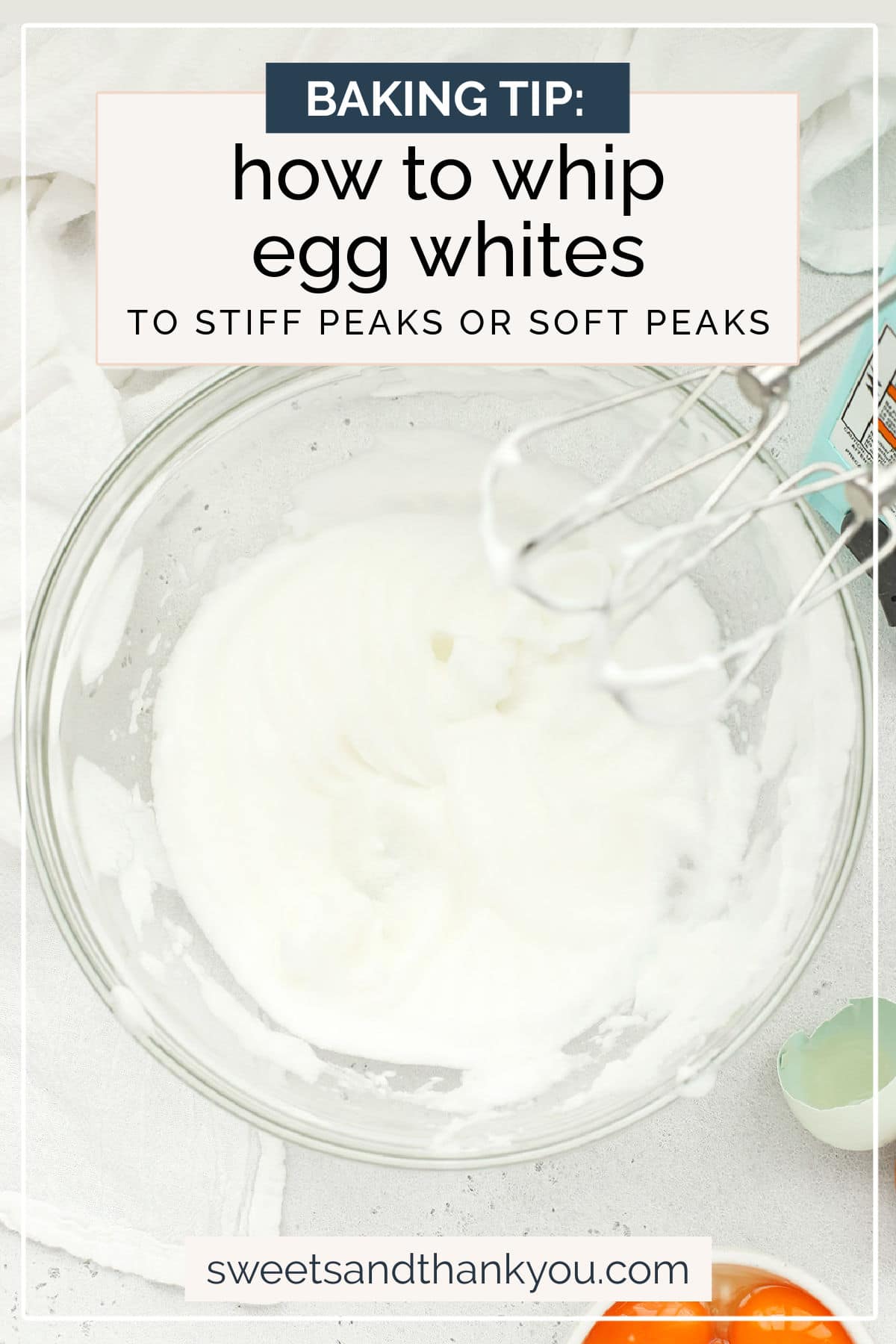
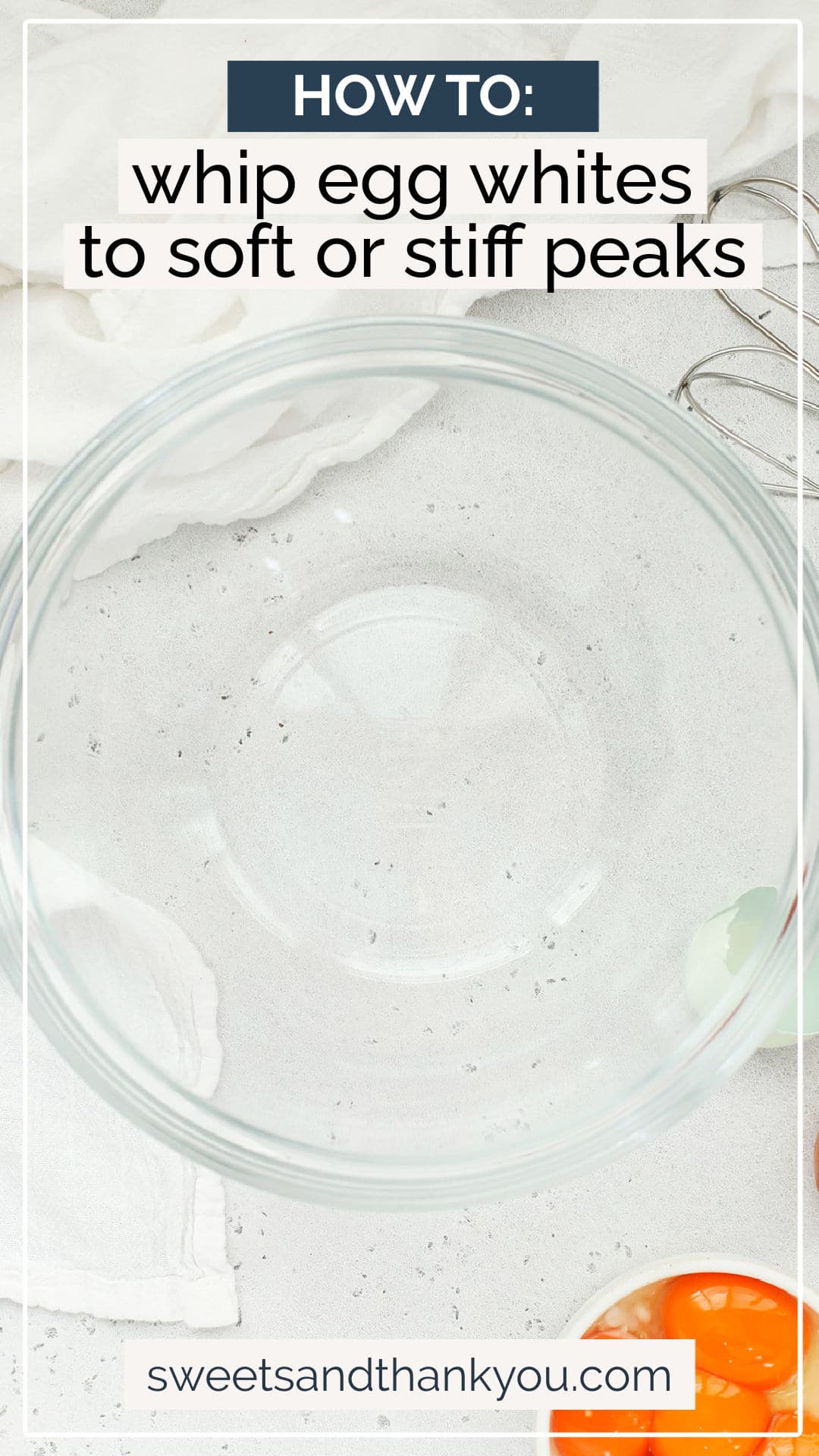
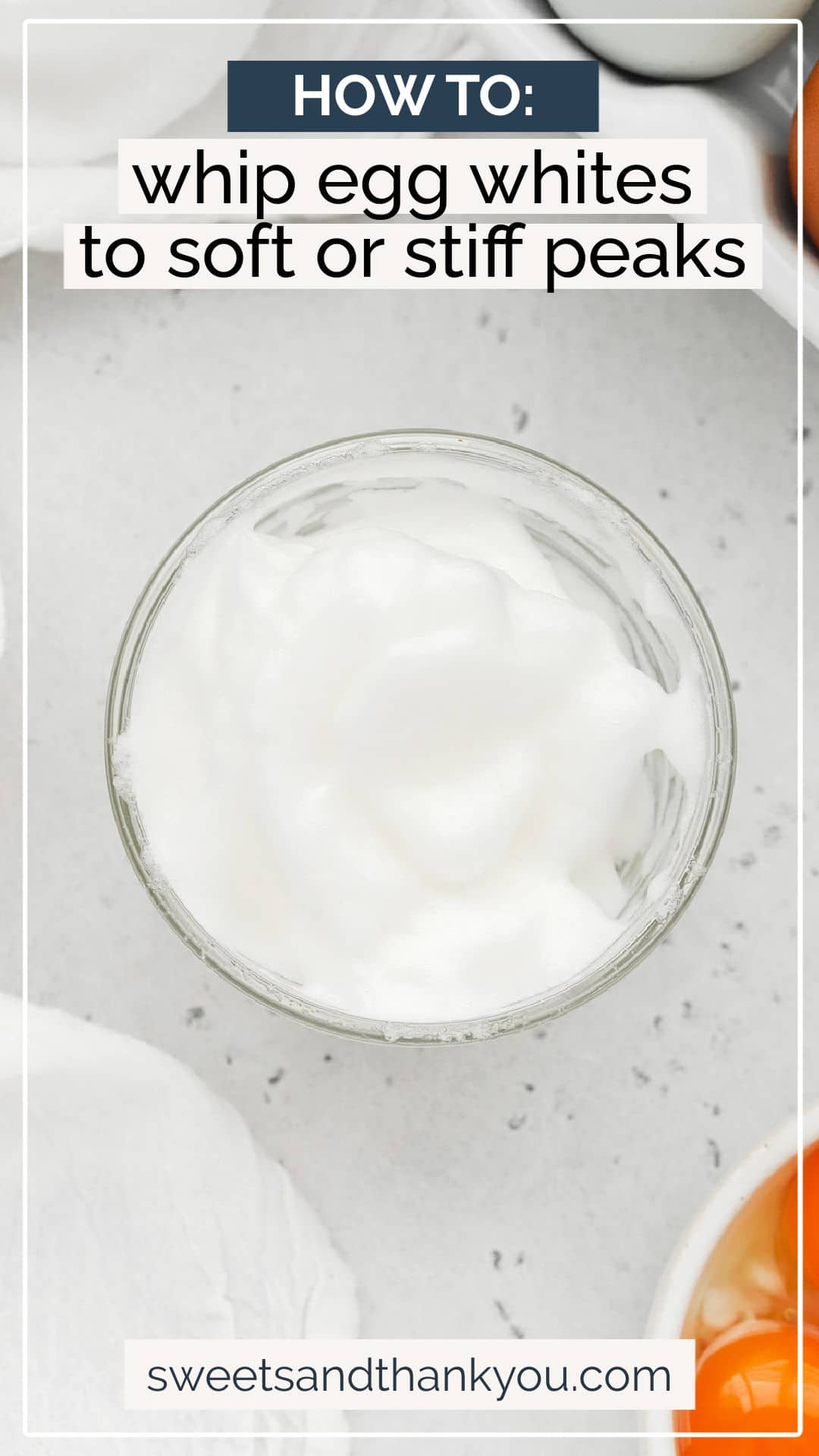
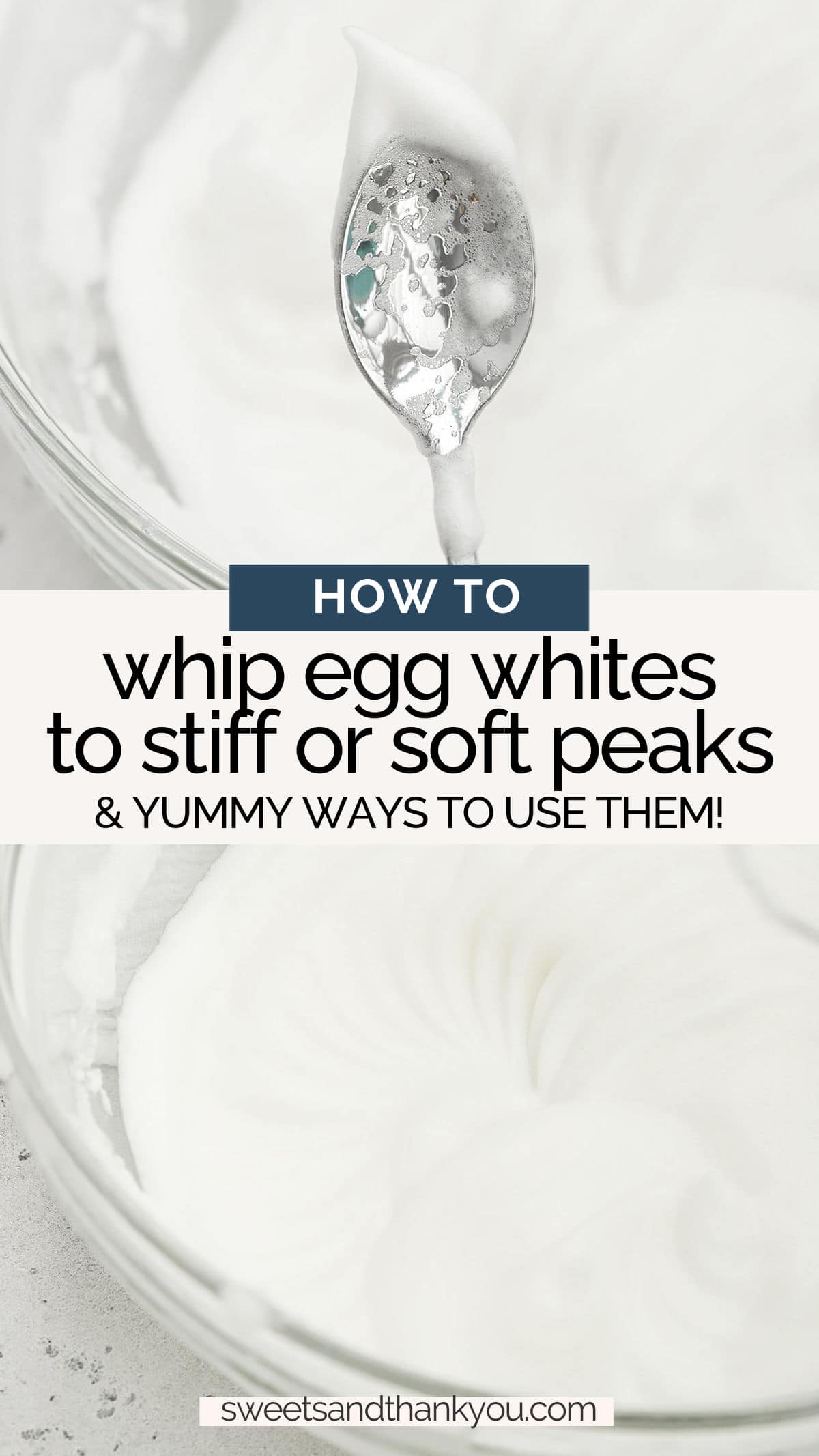


This is so helpful! Thank you